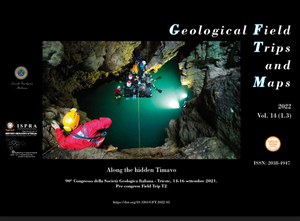Along the hidden Timavo
90° Congresso della Società Geologica Italiana - Trieste, 14-16 settembre 2021. Pre congress Field Trip T2
Almost 200 years after the first studies on the Timavo River, researchers are still carrying out their investigations, thanks in part to European projects, aiming to improve the knowledge on the Reka/Timavo cross-border aquifer in order to protect the groundwater resource through quantitative and qualitative monitoring of the underground waters. The Classical Karst Region is, in fact, home to what is generically called the underground Timavo network, a set of underground drainage paths developed well below sea level. The waters flow both in large conduits and in small fractures characterizing the rock mass. Water is the engine that created all these hypogean features and the surface karst morphotypes thanks to the chemical (dissolution) and physical (erosion) processes. The topographical surface is studded with thousands of dolines. Throughout the territory, more than 5.000 caves have been explored, of which more than 150 have a development exceeding a hundred meters. Out of all of them, only less than a dozen reach the water base level (Timavo caves) and others are crossed by water during floods. In this framework is the field trip proposed in the guide book designed as an accompaniment for visitors and participants in the 90° SGI Congress. The excursion goes along the underground path of the Reka/Timavo River, starting from Slovenia, visiting the Škocjan caves in which the river disappears underground (UNESCO world heritage site since 1986). The excursion moves on to the Grotta Gigante cave with another stop at the surface dissolution laboratory and the museum, after which visitors will take part in the excellent sightseeing to be found at Doberdò Lake and at the Timavo Springs where freshwaters meet the salty Adriatic Sea.
DOI: https://doi.org/10.3301/GFT.2022.03

